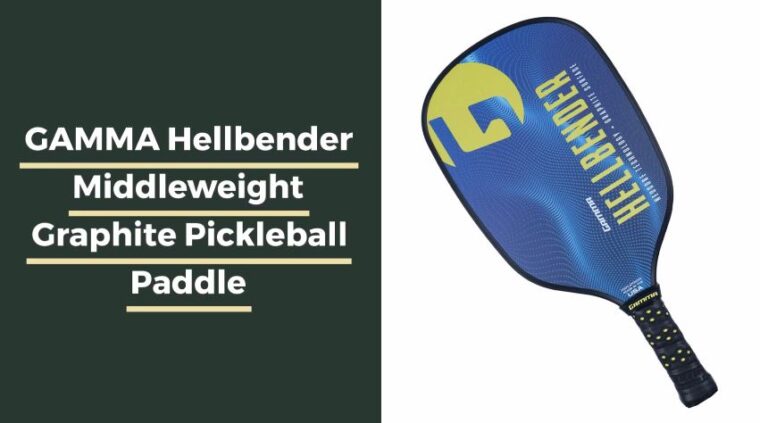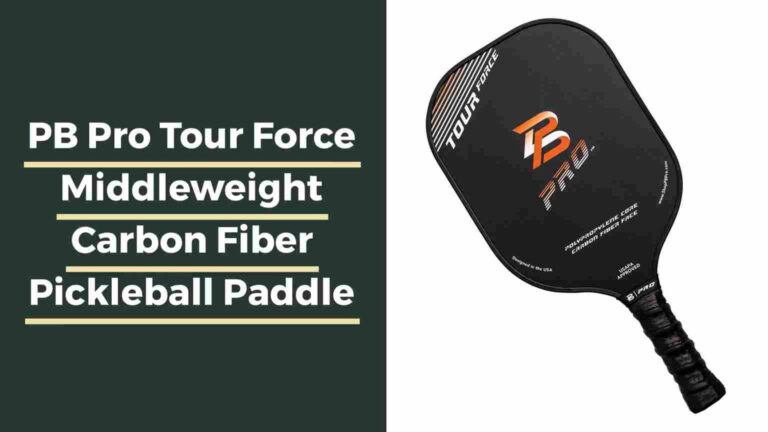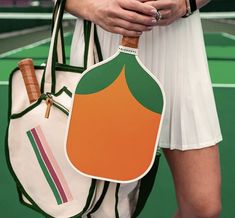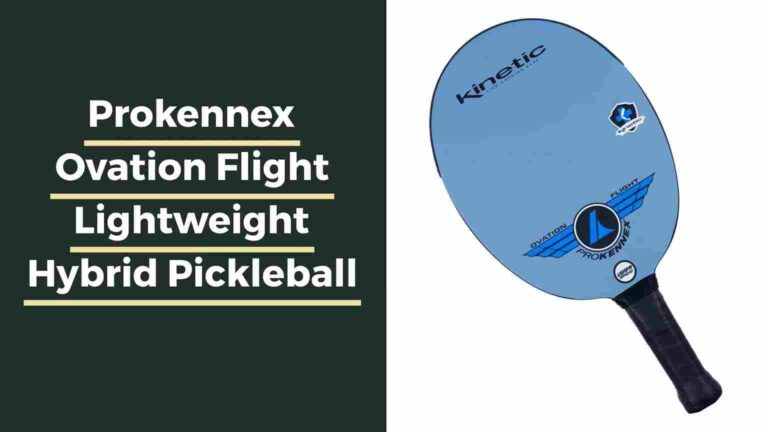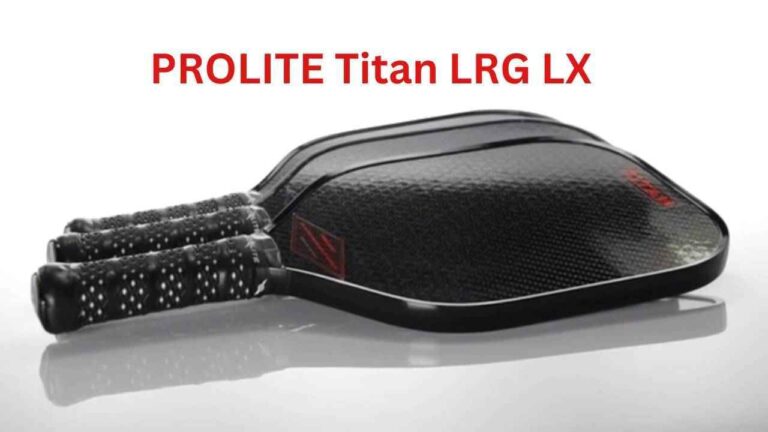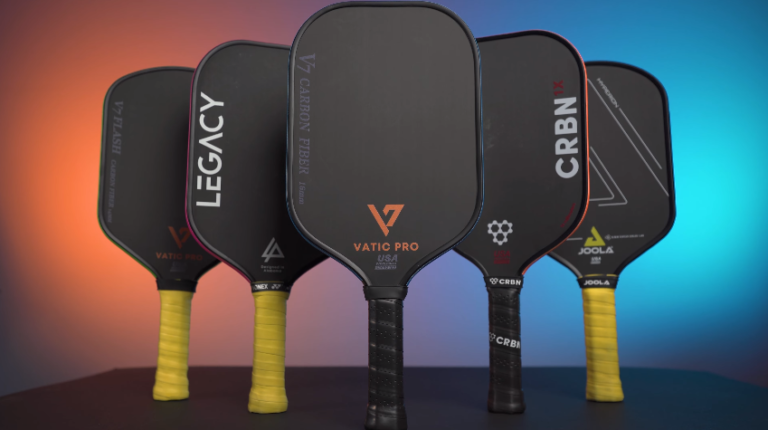it is necessary to make sure that you have an approved pickleball paddle if you plan to play in official tournaments and games. The regulation of pickleball equipment is crucial to guarantee fair play and to maintain the integrity of the game. The USAPA has extremely strict rules and regulations in place to ensure the right play and to promote the growth of the sport. By checking the USAPA website for a list of approved paddles and following the rules and regulations set by the USAPA, you can make sure that you have a legal paddle and enjoy the game of pickleball to its fullest.
What pickleball paddles are banned?
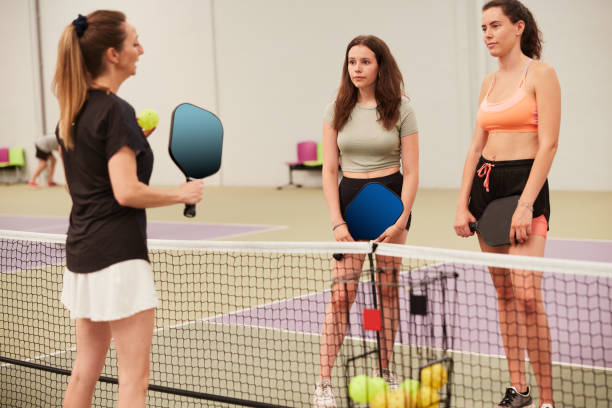
Pickleball is a fast-growing sport worldwide that has gained popularity over the past several years. It is a fun, low-impact sport that is enjoyed by people of all ages. However, like all other sports, some rules and regulations must be followed that govern the sport. When it comes to the right equipment to be used, certain pickleball paddles are banned strictly and not allowed in official tournaments and games. In this article, we will take a closer, deep look at what pickleball paddles are banned, the reasons behind the ban, and how to make sure you have an approved paddle before you finally hit the court.
When it comes to choosing the Pickleball paddle, there are different factors to consider such as price, weight, shape, and size. The price of a paddle can change greatly throughout, with options ranging from budget-friendly to very high-end. The weight of a paddle can also play a key role in your decision, as a heavier paddle can offer more power while a lighter paddle can provide better control.
Mostly, it is seen that pickleball paddles are banned before playing. But there are scarce chances when there is seen a fault or disapproval even after playing the tournament professionally. It is recommended to get your pickleball paddle approved by any recognized and trustworthy brand.
The regulation of pickleball equipment is crucial to ensure fair play and to maintain the integrity of the game. We will discuss the official regulations that govern the use of pickleball paddles, and why certain paddles are banned.
Pickleball is a growing sport loved by everyone, and it is essential to ensure that players have access to the right equipment to make the game safe, secure, and enjoyable. In this article, we will be discussing the pickleball paddles that are banned and why they are not allowed on the court.
In professional pickleball matches, the use of paddles that do not conform to the standards set by the USA Pickleball Association (USAPA) is strictly prohibited. Even among the approved list of paddles, certain courts may have additional restrictions, such as banning particularly noisy paddles.
Although there have been only a few instances where entire paddle models have been banned from professional play, most manufacturers make sure to comply with the USAPA’s standards. However, at the court level, a greater number of paddles have been banned due to various reasons. It is worth examining these reasons to avoid similar issues in the future.
pickleball paddles Association
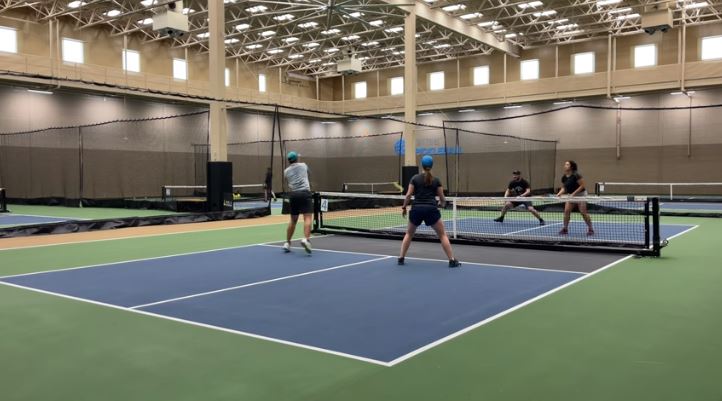
Pickleball paddles are rightly regulated by the USA Pickleball Association (USAPA) to ensure fair and justice play and to promote the growth of the sport. The USAPA has strict protocols, rules, and regulations in place to control the size, weight, and composition of pickleball paddles. Any paddle that does not fulfill these standards is considered illegal and banned from use in official tournaments and games.
The USAPA has banned the use of paddle materials that are considered to be too hard, such as metal or fiberglass. These materials are deemed to give players an unfair advantage over their opponents, as they provide better power and control. The USAPA has also banned the use of specific shapes and designs, as they can be used to manipulate the ball in different ways that are not in line with the rules of the game.
To ensure that you have an approved paddle, it is important to check the USAPA website for a list of approved paddles.
This list is updated regularly, so it is the best idea to check it before purchasing a new paddle. If you are not sure whether your paddle is approved, you can also contact the USAPA for clarification.
By following the regulations and using an approved paddle, players can enjoy the game of pickleball to the fullest and maintain the safety of all players on the court. If you are unsure about the specifications of your pickleball paddle, check the IPA website, and make sure that your equipment is up to date and approved.
Why Pickleball Paddles Get Banned
To maintain fairness and competitiveness in the game of pickleball, the USA Pickleball Association (USAPA) and the International Federation of Pickleball (IFP) have established specific regulations that apply to all pickleball paddles.
However, these standards only apply to formal and official tournaments, not casual players. Nevertheless, it is still advisable for casual players to use officially approved paddles instead of banned ones to ensure the best possible game experience. This will also prepare players for future tournaments should they decide to pursue competitive play.
So, what determines if a paddle is approved or banned?
The Paddle’s Core Must Be Made Of Approved Materials

When submitting a paddle for approval to the USAPA or IFP, the core material is among the factors tested. The organizations utilize a deflection test to determine the paddle’s rigidity and compressibility by observing how much the pickleball bounces off the surface of the paddle. Polymer or polypropylene, Nomex, and aluminum are among the most frequently approved materials for the paddle’s core. Although some of these materials perform better than others, they are all authorized and offer excellent paddle performance.
Paddles that utilize non-approved materials, such as compressed foam, are banned from professional pickleball tournaments. Despite foam cores previously being approved for their performance, they were eventually banned by the USAPA due to the foam cores degrading rather quickly over time.
The Surface Must Not Have Too Much Texture
The surface of a pickleball paddle can contribute to ball spin during play, which can be advantageous for the player since it makes their shots less predictable to their opponent. Some manufacturers deliberately add a rough texture to their paddles to increase spin. However, excessive spin is deemed unsportsmanlike. Therefore, the USAPA has established a maximum allowable amount of spin that a paddle can produce, as well as standards for the roughness of a paddle’s surface texture.
To ensure compliance with these regulations, all paddles submitted for approval to the USAPA are thoroughly tested for roughness. Paddles with surfaces that are excessively rough or dented are prohibited from professional tournaments since they provide the player with an unfair advantage over their opponents.
Factors Affecting the Quality of Pickleball paddle
Various factors determine whether a pickleball paddle is banned or not. The size, weight, and shape of the paddle are some of the crucial elements that are taken into consideration when approving or prohibiting a pickleball paddle.
The International Pickleball Association (IPA) is responsible for setting the official regulations for pickleball paddles. The IPA has established specific guidelines for the size, weight, and surface area of pickleball paddles to ensure fair play and to prevent any player from having an unfair advantage.
A pickleball paddle that does not meet the specifications set by the IPA is considered illegal and is banned from use in official tournaments and games. The use of an unauthorized paddle may result in disqualification from the game, and players found using banned paddles may face penalties.
The Paddle’s Design
While it may seem insignificant, the design and paint used on the surface of a pickleball paddle must meet specific standards set by both the USA Pickleball Association (USAPA) and the International Federation of Pickleball (IFP). This is to ensure fair play and sportsmanship during professional pickleball tournaments.
There are two main reasons why the design and paint on a paddle are regulated. The first reason is that the design must not be offensive in any way. As pickleball matches are often broadcast on live television and spectators are present at the court to watch the match, it is important that the sport’s reputation is not tarnished by offensive designs on paddles. The USAPA and IFP take this very seriously and prohibit any design that may be considered inappropriate or offensive.
The second reason why the design and paint on a pickleball paddle are regulated is to prevent glare from reflecting off the paddle and potentially giving a player an unfair advantage. The paint used to create the design must not be too reflective, as it could cause glare in the eyes of an opponent, making it difficult for them to track the ball. Therefore, all designs printed or painted on the surface of a paddle must have a matte finish to minimize the amount of glare.
It may be surprising to some that the design and paint on a paddle are so closely monitored, but it is all part of the USAPA and IFP’s efforts to maintain a level playing field and uphold the integrity of the sport. Any paddle that fails to meet these standards and is found to have an offensive design or reflective paint will be banned from all professional pickleball tournaments.
While the regulation of design and paint on a paddle may seem minor compared to other aspects of the sport, it is crucial to ensuring fair play. Pickleball paddles with offensive designs or reflective paint could give players an unfair advantage, which goes against the spirit of the game. Additionally, allowing such paddles in professional tournaments could damage the sport’s reputation and make it less appealing to spectators.
It is important to note that these regulations only apply to professional pickleball tournaments, not casual play. If you are playing for fun or competing against friends and family, you do not need to worry about the design or paint on your paddle. However, if you plan to compete in professional tournaments, it is essential to use a paddle that meets all of the USAPA and IFP’s standards, including those related to design and paint.
In conclusion, while the design and paint on a pickleball paddle may seem like a minor detail, it plays an important role in maintaining fair play and sportsmanship during professional pickleball tournaments. By regulating the design and paint, the USAPA and IFP ensure that all players have an equal chance to succeed on the court, regardless of their equipment. So, whether you are a casual player or a seasoned pro, make sure your paddle meets all of the standards set by the governing bodies to ensure a level playing field for all.
The Paddle’s Size And Weight
Pickleball is a sport that has grown in popularity over the years, and with it, so has the importance of adhering to regulations set by the United States of America Pickleball Association (USAPA) and International Federation of Pickleball (IFP). One such regulation is the size and weight of the pickleball paddle.
Unlike tennis, where players have a variety of racket sizes to choose from, in pickleball, there is a standardized paddle size that players must use. The USAPA and IFP strictly regulate the length of a paddle, which must not exceed 17 inches. Even if a manufacturer wants to make an elongated paddle, they cannot go beyond this length. In addition, the surface area of the paddle must not be greater than 24 inches, which includes the edge guard.
But it’s not just the size that’s regulated, the weight of a paddle is also important. Ideally, a paddle should weigh between 7.5 and 8.5 ounces, although there is some variance allowed. Most paddles are manufactured within the correct weight range, but some players like to add additional weight to their paddles. For example, lead tape can be added to increase the weight, but only within reason. If a paddle is too heavy, it could be deemed illegal by officials, so players must ensure that they remain within the legal weight range.
It’s important to note that the regulations set by USAPA and IFP are not arbitrary. The size and weight of a paddle affect the way the game is played and can affect the outcome of a match. A larger paddle can provide players with more reach and a larger sweet spot, while a heavier paddle can provide players with more power in their shots. However, if one player has an advantage due to the size or weight of their paddle, it can create an unfair playing field, which goes against the spirit of the game.
Paddle Customization Must Be Limited
Players are allowed to make changes to their pickleball paddles, but there are limits set by USAPA that must be adhered to. For instance, players can add writing to the paddle’s surface, but it must not impact the roughness of the paddle. Similarly, tape can be added to the grip to improve it, and players can adjust the weight of the paddle within reasonable limits to enhance the power of their swings.
However, any modifications or customizations that go against the rules set by USAPA and the IFP are prohibited. If a player is found to be using an illegal paddle during an official match or tournament, their paddle will be banned, and any victories achieved using that paddle will be disqualified. Even if a player manages to pass the inspection process with an illegal paddle, the truth will eventually come out, and they will face the consequences.
Therefore, it is crucial for players to ensure that any customization they make to their pickleball paddles comply with USAPA guidelines to avoid disqualification and potential damage to their reputation.
Court-Specific Paddle Bans

Sometimes, a pickleball paddle that is approved by both the IFP and USAPA and is completely legal can still be banned from specific matches. This is because some pickleball courts have additional rules that are stricter than the regulations set by the IFP and USAPA. These additional rules are usually due to particular features of the court or rules imposed by the area where the court is located.
One example of a court with additional rules is the Sun City Grand pickleball club in Surprise, Arizona. This club has stricter rules regarding paddle noise too loud. The club aims to keep the area as peaceful and quiet as possible, even during sports and entertainment events.
While all sports have a certain level of noise, the nature of the pickleball paddle and the materials it’s made of can make it louder than other sports. Therefore, the club has set a limit on the amount of noise allowed on the courts, and any paddles that are deemed too loud are banned from use on the courts at Sun City Grand.
The club has provided a complete list of banned and allowed paddles on their website, and if your paddle is not on the list, the default answer is “no.” Additionally, the club uses the services of a professional company to test the decibel levels generated by each paddle to determine if it’s within the approved range.
This is just one example of how additional rules can be enforced at a particular court. Therefore, before playing in any match, it’s essential to check the local clubs and courts to find out if they have any specific paddle specifications that are allowed or banned on their courts. This way, you can avoid frustration and disappointment during a match.
In conclusion, it’s crucial to follow the rules and regulations set by the IFP and USAPA when selecting a pickleball paddle. However, it’s equally important to check for any additional rules or specifications that may be enforced at the specific court where you plan to play. By doing so, you can ensure that your paddle is legal and avoid any issues during a match.
Frequently Ask Question
Which Pickleball Paddles Are Banned?
The USA Pickleball Association has banned a handful of popular paddles in the past, though it’s not a common occurrence. However, it can be frustrating when a previously approved brand is suddenly banned, especially right before an important tournament or competition. This was the case with CRBN Pickleball, which recently faced a ban due to non-conformity.
CRBN Paddles
CRBN has been a popular manufacturer of pickleball paddles for several years and has received approval from the USA Pickleball Association (USAPA). Many professional players have used and promoted CRBN paddles, including Darrian Young, Michelle Esquivel, Yana Grechkina, and Ben Newell. However, during the US Open in April 2022, USAPA suddenly banned CRBN paddles, causing a great deal of shock and surprise among players.
It was discovered that the CRBN paddles did not comply with USAPA regulations in a re-test conducted a year after their approval. Although there were no detailed explanations from either CRBN or USAPA, it was evident that the play characteristics of the CRBN paddles were inconsistent and did not conform to USAPA regulations. Following reports about these inconsistencies, USAPA conducted two sets of tests, both of which confirmed non-compliance, leading to the removal of CRBN paddles from the USAPA approved list. CRBN accepted the results and immediately recalled its paddles.
As a small family-owned business, CRBN quickly responded to the situation by making changes to its paddles and introducing a new model for USAPA testing and approval. The new model was approved by USAPA after conducting necessary tests, but unfortunately, it was too late for players who wanted to use CRBN paddles in the US Open tournament.
CRBN provided various options for players who owned banned CRBN pickleball paddles, such as continuing to use their banned paddle only for recreational purposes, joining the “CRBN Family” membership plan for a discounted price, swapping their banned CRBN paddles for a new approved paddle, or swapping their recently purchased non-CRBN paddle for a new approved CRBN paddle.
CRBN’s handling of the situation was exemplary, as they managed the setback of their banned products with grace and style. The company retained most of its old customers and won many new supporters due to the elegant manner in which they handled the situation.
Conclusion
In conclusion, it is necessary to make sure that you have an approved pickleball paddle if you plan to play in official tournaments and games. The regulation of pickleball equipment is crucial to guarantee fair play and to maintain the integrity of the game. The USAPA has extremely strict rules and regulations in place to ensure the right play and to promote the growth of the sport. By checking the USAPA website for a list of approved paddles and following the rules and regulations set by the USAPA, you can make sure that you have a legal paddle and enjoy the game of pickleball to its fullest.
it is important to use an approved pickleball paddle to ensure equitable play and to maintain the integrity of the game. The International Pickleball Association (IPA) sets the official regulations for pickleball paddles, and it is desired to follow these guidelines to avoid any penalties or disqualifications.

